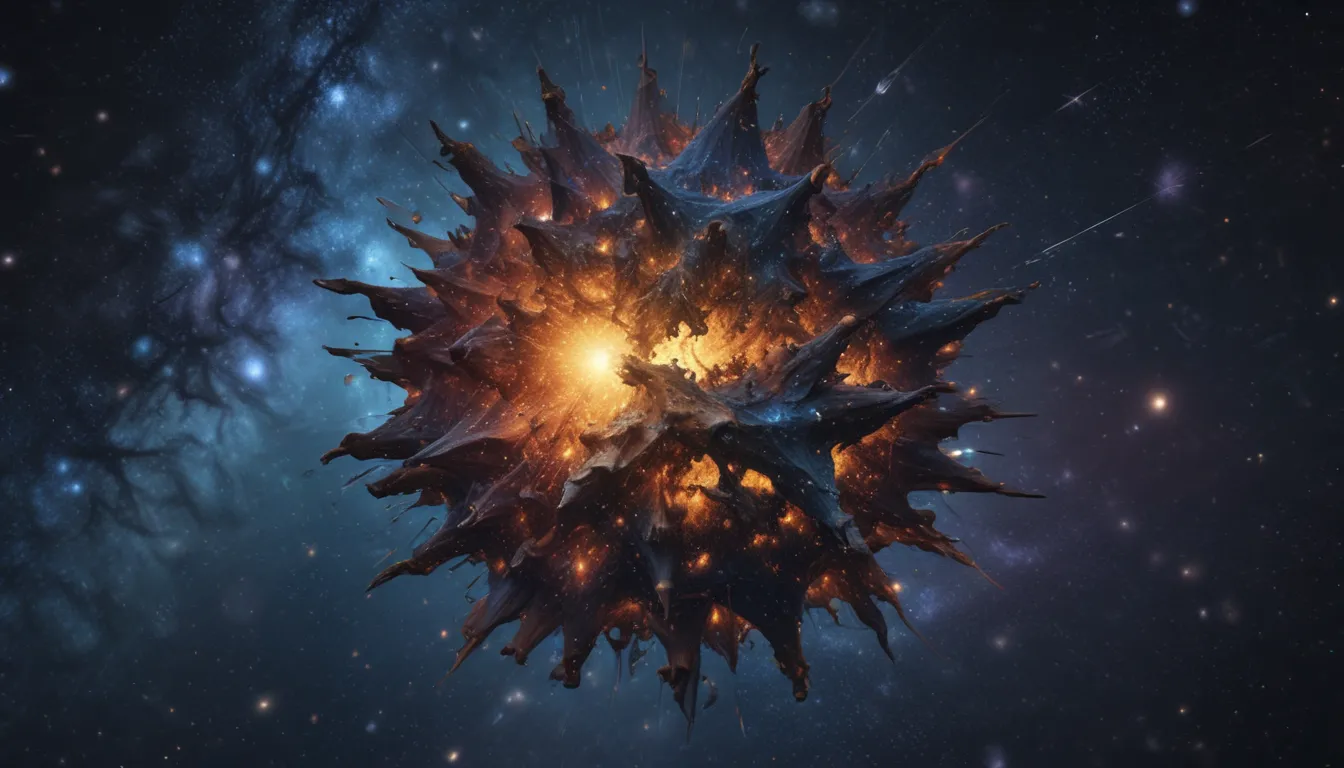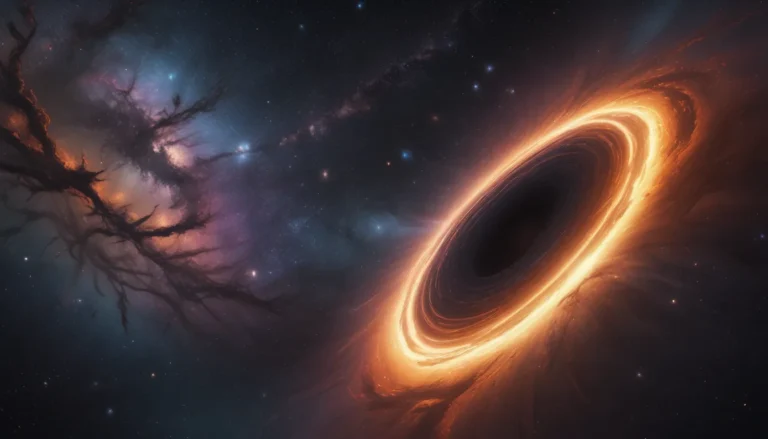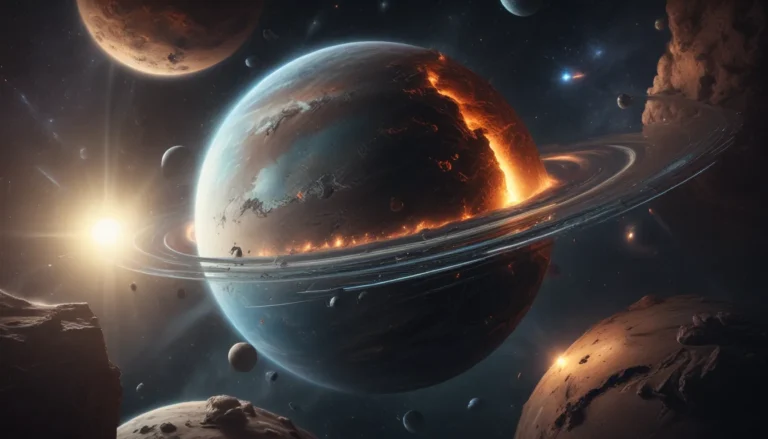The pictures we use in our articles might not show exactly what the words say. We choose these pictures to make you interested in reading more. The pictures work together with the words but don’t take their place. The words still tell you the important facts.
Starry nights are not just a sight for sore eyes but also a gateway to unraveling the secrets of the cosmos. Star clusters, celestial communities of stars bound by gravity, offer a window into the dynamics of stellar evolution and the formation of galaxies. In this article, we embark on a cosmic journey to explore the astonishing world of star cluster dynamics, uncovering valuable insights into their behavior, structure, and evolution. Let's delve into the mesmerizing dance of stars and the powerful forces that shape the existence of these celestial gatherings.
Unveiling the Cosmic Communities
- Star clusters are cosmic communities formed from interstellar gas and dust, where gravity reigns supreme, sculpting the birth, life, and interactions of stars.
- Through the study of star clusters, astronomers gain valuable insights into the universe's evolution and dynamics, peering into the intricate dance of gravity that shapes the cosmos.
The Birth of Star Clusters
- Star clusters emerge from vast clouds of interstellar gas and dust, where gravity works its magic, pulling the materials together to form dense regions called protostars.
- Over time, these protostars accrete mass, heat up, and eventually ignite, giving birth to the stars that populate the cluster.
Journey Through the Milky Way
- The Milky Way galaxy is home to a myriad of star clusters, ranging from open clusters like the Pleiades to globular clusters like Omega Centauri.
- Open clusters, filled with young stars, while globular clusters boast an older population, tightly packed with thousands to millions of stars.
Gravity: The Conductor of Stellar Symphony
- Gravity serves as the glue that binds stars within a cluster together, orchestrating their movements and interactions.
- From stellar collisions to binary star systems, and even star ejections, the gravitational interactions within a cluster lead to a myriad of fascinating phenomena.
Illuminating Stellar Evolution
- Star clusters provide a unique stage for studying stellar evolution, offering a glimpse into the life cycles of stars from birth to death.
- Observing clusters of different ages allows scientists to track the processes that shape the universe and unveil the mysteries of stellar evolution.
Peering into Galactic Evolution
- Studying star clusters offers valuable clues about the evolution of galaxies, shedding light on their past, present, and future.
- Properties such as cluster age and metallicity provide insights into the formation of new stars and the merging of galaxies.
Unveiling Mass Segregation
- Within star clusters, mass segregation leads to the migration of more massive stars toward the core while lighter stars drift to the outskirts.
- This phenomenon, driven by interactions between stars, influences the dynamics of the cluster over time.
Dynamic Interactions Within Clusters
- Gravitational interactions between stars spark dynamic exchanges of mass, energy, and angular momentum, shaping the trajectory of stars within the cluster.
- Close encounters between stars give rise to a dynamic interplay that sculpts the structure of the cluster.
Witnessing Stellar Ejections
- During close stellar encounters, some stars gain enough energy to be ejected from the cluster, becoming runaway stars.
- These rogue stars traverse the galaxy at high speeds, leaving behind a trail of gas and dust in their wake.
A Symphony of Binary Star Systems
- Star clusters serve as breeding grounds for binary star systems, where two stars dance around a common center of mass.
- These systems form through various mechanisms, including capture, exchange interactions, or disk fragmentation.
Embracing Galactic Interactions
- Star clusters interact with larger galactic structures such as spiral arms and stellar streams, impacting their dynamics.
- These interactions can lead to cluster disruptions and shape the evolution of the cluster over time.
Sparking Stellar Births
- Star clusters have a hand in triggering new star formation by compressing nearby gas clouds with their immense gravitational forces.
- This process sustains the cycle of stellar birth and death, perpetuating the cosmic dance of creation.
Unraveling Stellar Populations’ Evolution
- By studying star clusters of varying ages, scientists gain insights into how stellar populations transform over time, shaping the diversity of stars.
- This exploration deepens our understanding of star formation and evolution across different stellar types.
Mysteries of Dark Matter Influence
- Dark matter, the enigmatic substance that pervades the universe, exerts gravitational influence on star clusters.
- Its effects sculpt the structure of clusters and influence the distribution of stars within, adding another layer of complexity to their dynamics.
The Enigma of the Great Attractor
- Star clusters, alongside other celestial forms, gravitate towards the mysterious Great Attractor, a massive gravitational anomaly.
- This enigmatic force beyond the Milky Way influences the motion of objects within its vicinity, shaping the cosmic tapestry.
Stellar Evolution’s Impact
- As stars in a cluster evolve and reach the twilight of their lives, their interactions have significant repercussions on the cluster dynamics.
- Stellar remnants like white dwarfs, neutron stars, and black holes introduce unique gravitational effects, further shaping the cluster's evolution.
Embracing Star Cluster Disruption
- Over time, various factors like gravitational interactions with other clusters and galactic structures, as well as tidal forces, disrupt star clusters.
- This gradual dissolution scatters the stars, leading to the eventual dispersal of the cluster.
Unveiling Exoplanet Discoveries
- Star clusters have emerged as fertile grounds for exoplanet discoveries, making it easier to detect and study these distant worlds.
- Transit observations and radial velocity measurements within the dense stellar environments uncover the secrets of exoplanets.
The Enigma of Blue Stragglers
- Blue stragglers, stars appearing younger and bluer than their counterparts, present a mystery often found in star clusters.
- These celestial anomalies result from stellar collisions or mass transfers in binary systems, adding intrigue to cluster dynamics.
Embracing Multiple Stellar Generations
- Some star clusters, particularly globular clusters, exhibit multiple stellar generations, indicating a diverse history of star formation.
- These episodic events throughout their lifespan contribute to a rich population of stars with distinct characteristics.
Star Cluster Dynamics’ Connection to Dark Energy
- Understanding star cluster dynamics offers crucial insights into dark energy, driving the accelerated expansion of the universe.
- The motion and distribution of star clusters refine our models of dark energy, illuminating its impact on cosmic structures.
In Conclusion
The enigmatic world of star cluster dynamics unveils a profound understanding of the universe's intricacies. From gravitational interactions shaping orbital paths to the stellar populations' diverse histories, each star cluster holds keys to cosmic marvels waiting to be unearthed. By peering into the evolution of star clusters, scientists unlock valuable knowledge about galaxy origins and the mechanisms propelling their growth. Through advanced observations and computational models, the curtains are lifted on the mesmerizing details of star cluster dynamics, illuminating the formations of binary systems, the impact of stellar collisions, and the influence of interstellar mediums. As our comprehension of star cluster dynamics deepens, so does our insight into the celestial phenomena orchestrating the cosmos. These astonishing facts about star cluster dynamics serve as a testament to the wonders awaiting exploration in the vast expanse of space.
FAQs: Unraveling Cosmic Curiosities
- What are star clusters?
-
Star clusters are groups of stars bound together by gravitational forces, ranging in size from a few dozen to several million stars.
-
How do star clusters form?
-
Star clusters form through the gravitational collapse of giant molecular clouds or tidal interactions between galaxies.
-
What is the lifespan of a star cluster?
-
The lifespan of a star cluster varies based on factors like mass, density, and environment, with some surviving billions of years.
-
Do all stars in a cluster have the same age?
-
No, star clusters contain stars of different ages due to the varied formation times within the same interstellar medium.
-
Can star clusters collide with each other?
-
Yes, star clusters can undergo gravitational interactions leading to mergers or collisions, impacting their dynamics and structure.
-
What can star cluster dynamics tell us about galaxies?
-
Studying star cluster dynamics offers insights into galaxy formation and evolution, unveiling the processes behind galactic structures.
-
Are all star clusters the same shape?
-
Star clusters come in various shapes such as spherical, elliptical, or irregular, influenced by their initial conditions and gravitational forces.
-
Can star clusters indicate a galaxy's age?
-
Yes, the properties of star clusters provide information on a galaxy's age, allowing estimation based on cluster distribution and characteristics.
-
How do scientists study star cluster dynamics?
-
Scientists employ observational data from telescopes and computational simulations to analyze the positions, velocities, and properties of stars in clusters.
-
What future areas of research exist in star cluster dynamics?
- Future research aims to explore formation mechanisms of star clusters, study the role of black holes in dynamics, and understand the link between clusters and galactic evolution.
Your Journey into Stellar Marvels Awaits
Embark on an exploration into the mesmerizing world of star cluster dynamics, where each cluster holds mysteries waiting to be discovered. From the enigmatic forces shaping the dance of stars to the profound insights into galaxy evolution, the cosmic tapestry unfolds with each revelation. As you delve deeper into the celestial wonders that star clusters offer, may your journey be filled with awe, discovery, and a deeper understanding of the marvels that adorn our vast universe. Join us in unlocking the secrets of the cosmos and unveiling the captivating spectacle of star cluster dynamics.






